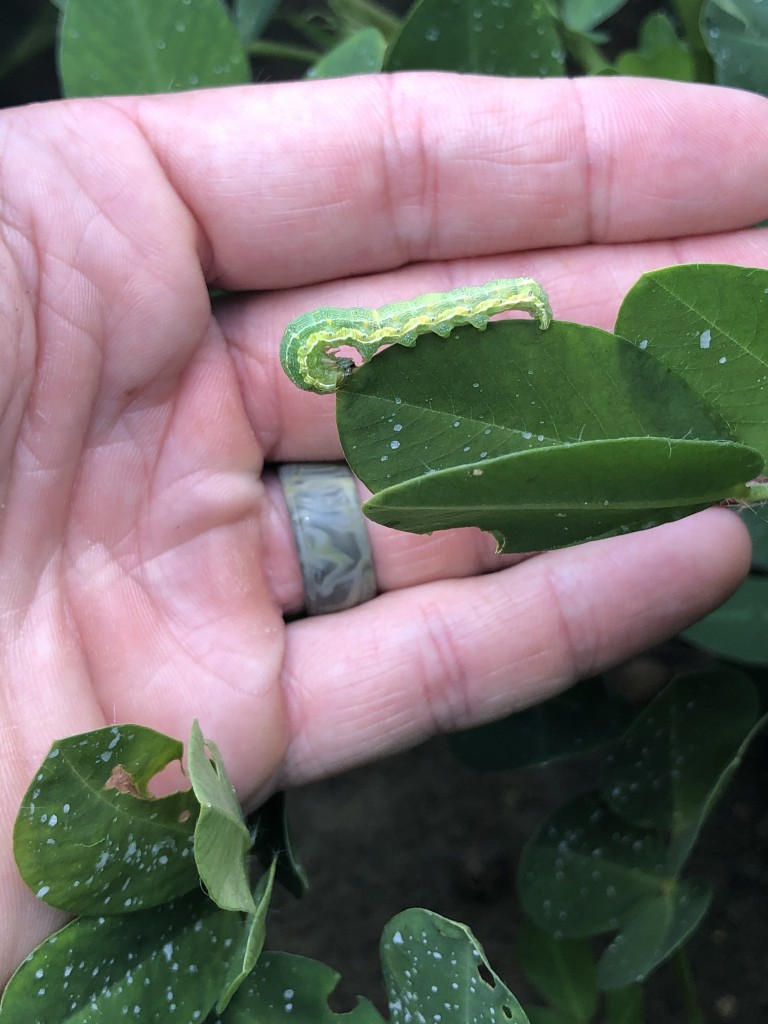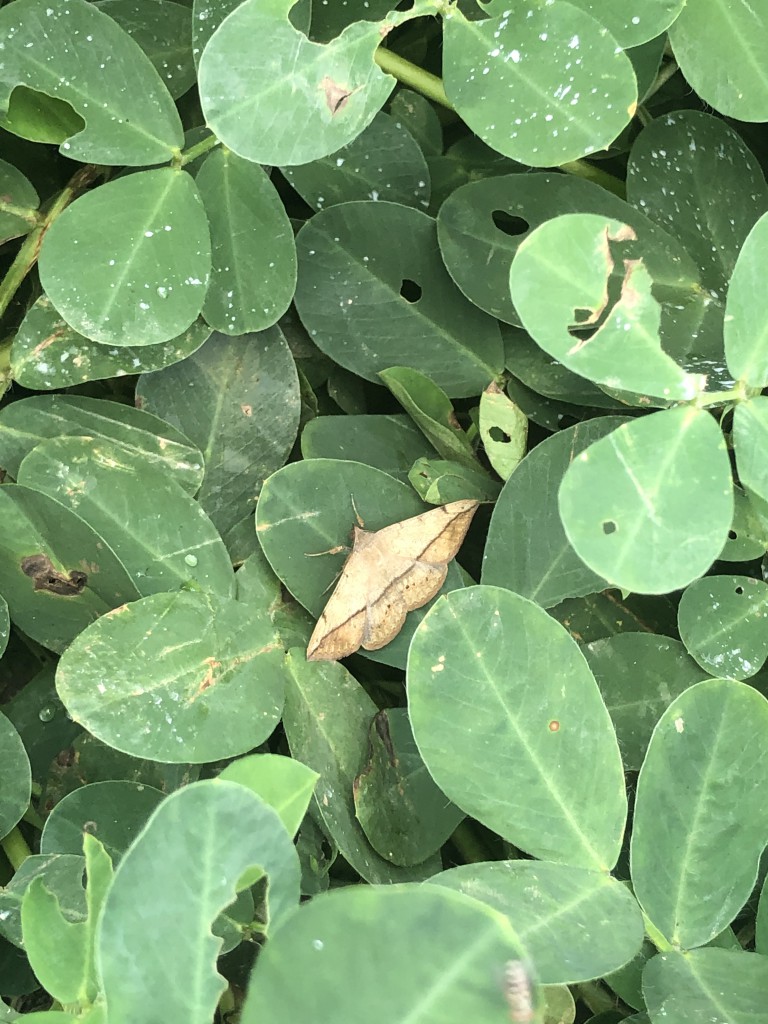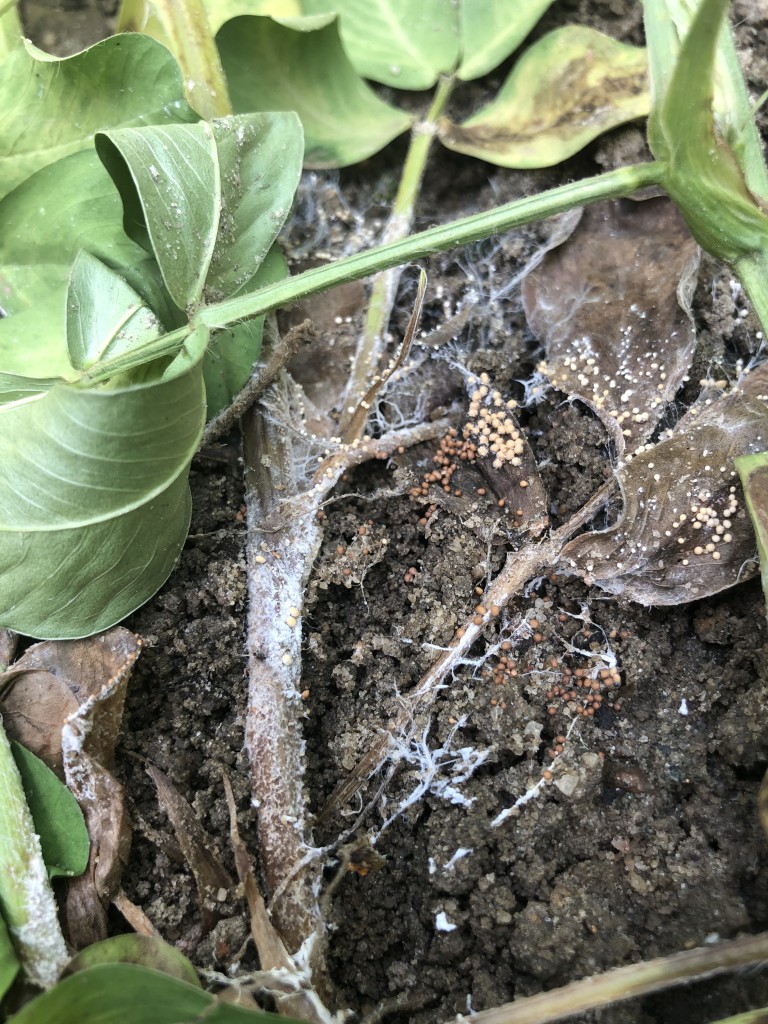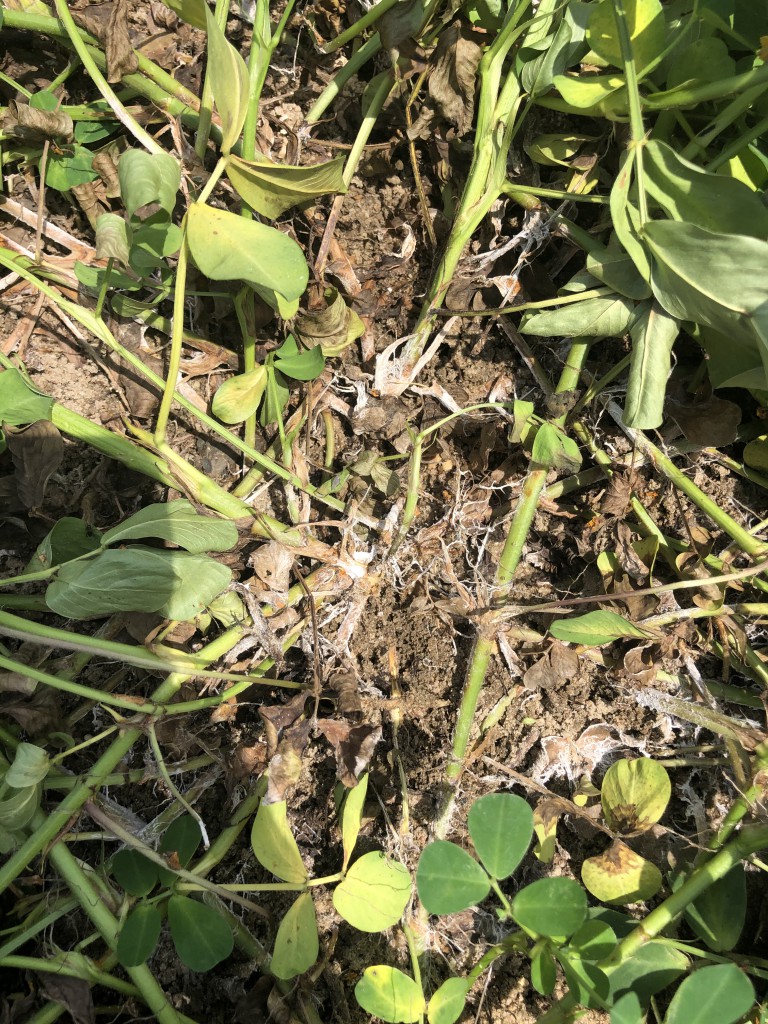Cotton
Target spot is showing up in places pretty heavy. This is not a disease that we spray for every year, but it might be necessary in certain fields this time. Here is an excerpt from Dr. Bob Kemerait:
Growers should consider protecting their cotton crop from target spot between the 1st and 6th weeks of bloom IF the disease is present, or is likely to develop, and conditions are favorable for development and spread, and IF the crop has good yield potential. Judicious use of fungicides can protect as much as 250 lb of lint where target spot is problematic. Where the crop is suffering from drought or poor growth from other causes, protection against target spot with a fungicide may not be warranted.

There are other fungicide options available for control of target spot. Please contact me if you have questions about those.

I am also starting to see a few whiteflies in some isolated fields on the southern end of Bleckley County. I am seeing some banded wing whiteflies, but they are mostly silverleaf (the ones we don’t want). We are nowhere near threshhold, and I am not sounding the alarm, but I wanted to make you aware. However, they are seeing large numbers in South Georgia earlier than usual, so we will continue to monitor them.


The only other comment I will make about cotton is regarding potassium deficiency. I have made many visits and received many calls about this issue. It seems it is more prevalent this year than I have seen before. Treatment options depends on the stage of the cotton. Here is a little more info from Dr. Glenn Harris:
To better diagnose K deficiency in cotton, we recommend that tissue analyses be performed in conjunction with soil test. UGA Agricultural & Environmental Services Laboratories (AESL) recommend sampling 30 to 40 youngest fully mature leaves on the main stem, which is typically the fourth or fifth leaf from the main stem terminal. The current UGA-AESL sufficiency range for cotton is 1.5 to 3%, but we recommend that you shoot for a minimum K level above 2% at peak bloom. Also, the UGA-AESL soil K classifications for the Coastal Plains and Piedmont areas in Georgia are shown in Table 1. If tissue and soil tests confirm K deficiency then K fertilization is needed. Apply the recommended K rates as sidedress. If side-dress is not feasible for obvious reasons, then foliar apply K at two weeks interval at 5 lbs K2O/ac per application.
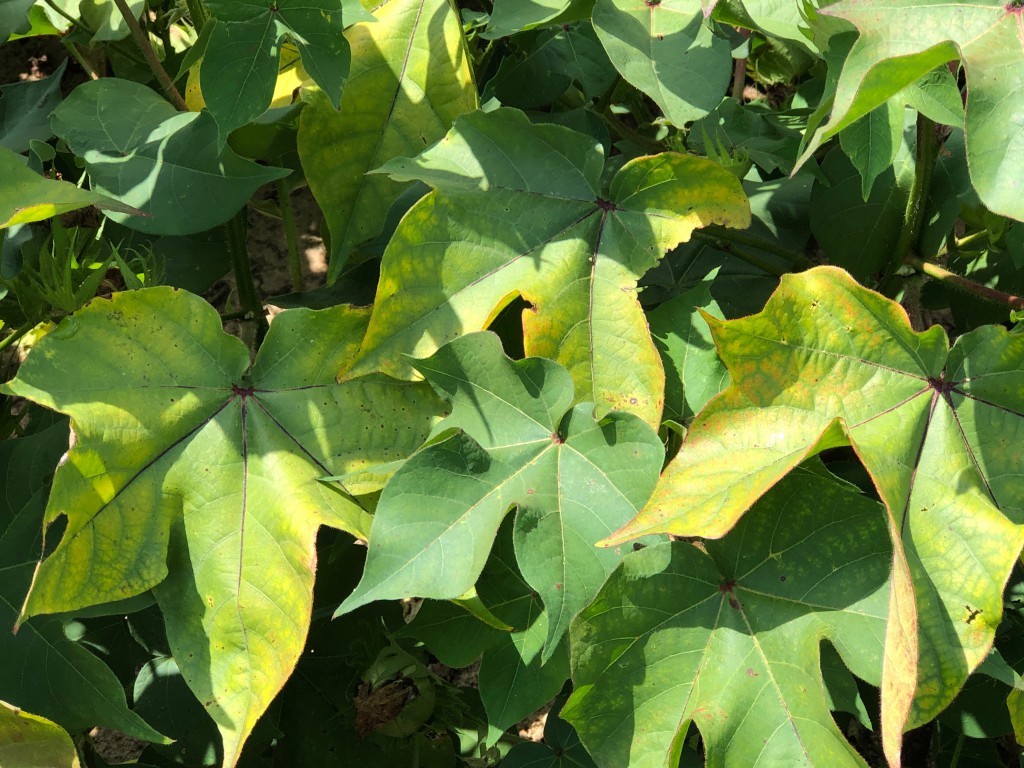
Peanuts
Two things that have seemed to explode in cotton the last couple of weeks are velvetbean caterpillars and white mold. These are two of our predominant pest in peanut especially later in the season. The best way to combat white mold is timely fungicide applications with effective products. The best way to combat velvetbean caterpillars is to have boots in the field. Moths were flying everywhere in fields I walked this week, so they are going to continue to increase. They are easy to kill with insecticides, but make sure someone is scouting regularly because they can do a lot of damage in a short amount of time. If you have questions about fungicide or insecticide options, please contact me.
